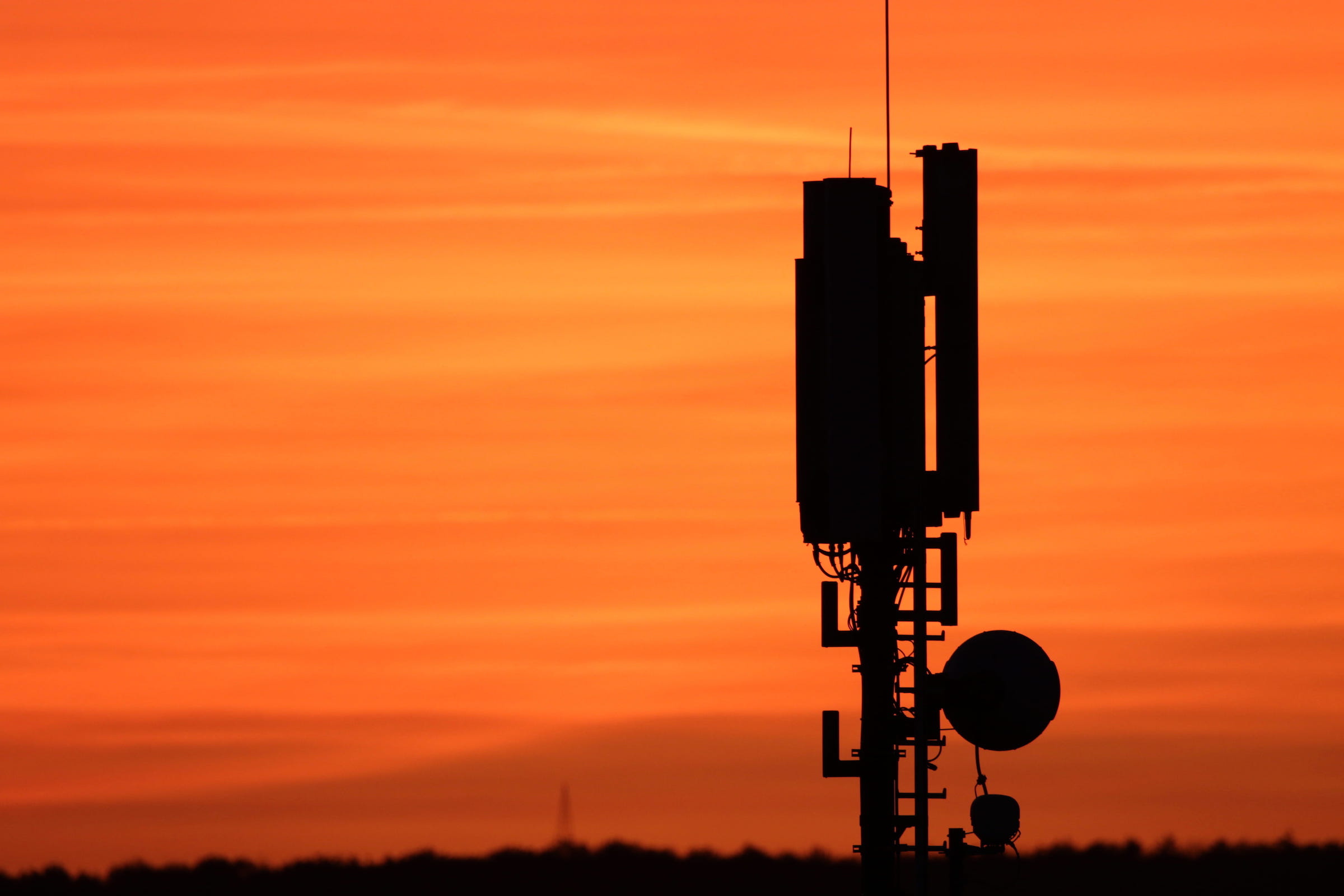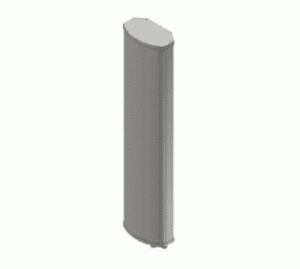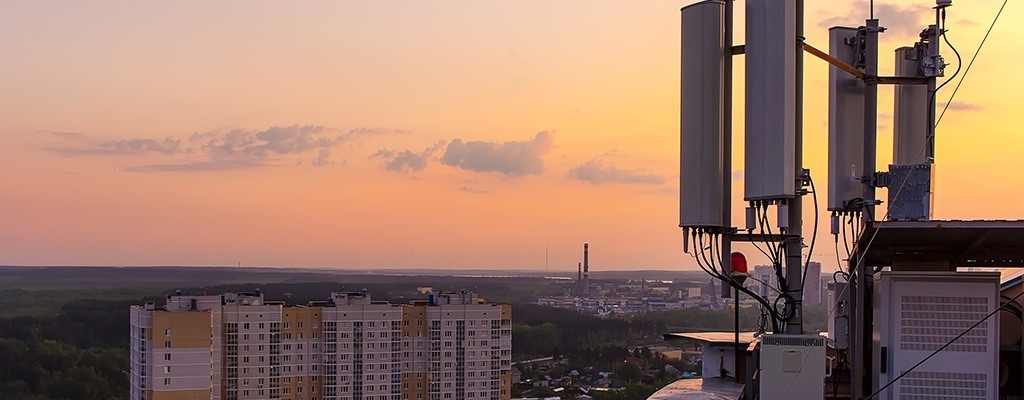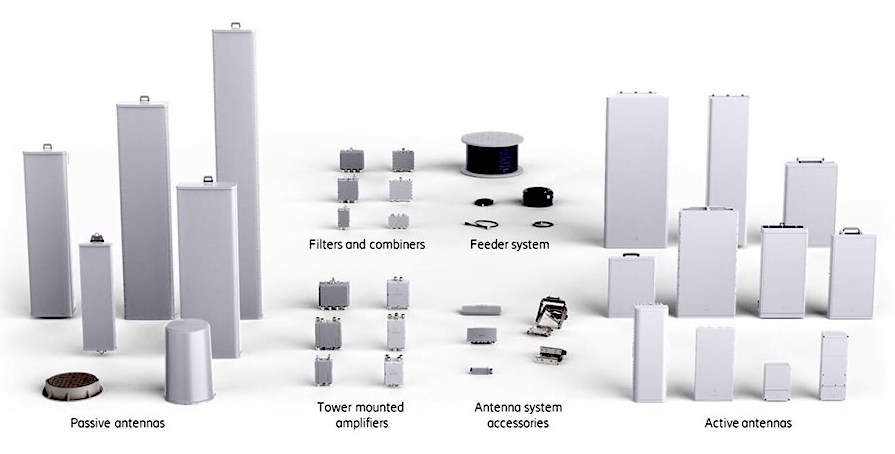5G Infrastructure Depends on a New Generation of Antennas — and Old Ones
5G specifications are being implemented with the latest connectivity hardware, including advanced antenna systems, as well as ongoing investments in 4G infrastructure.
The fifth generation of cellular network technology, 5G, continues its advance. In addition to providing massive service improvement, it will forever change hardware and connectivity trends from the cell station antenna through to the mobile office. Unlike its predecessors, 5G specifications are organized around an IP-based architecture stripped of the requirements to lay on top of legacy voice and cable network hardware and software protocols. The specifications also call for software-defined functions. Together, these defining characteristics of the 5G specifications will dramatically change how mobile infrastructure is implemented. systems

As with 4G, which is still being built out 10 years after its introduction, the 5G rollout will continue for years. During this time, subsequent waves of 5G specifications will be released and new generations of products will be introduced.
The first wave of 5G specifications (Release 15) became available in 2019. These defined the foundational advances needed to rollout enhanced mobile broadband services. The second wave of 5G specifications (Release 16), to be released later in 2020, provide added detail needed for the challenging requirements of vertical industry applications like transportation and healthcare.
The 5G Release 15 specifications focus on the radio equipment upgrades needed to achieve massive increases in bandwidth. Some are groundbreaking. Others are iterative.
Strong 4G LTE Infrastructure is Critical for 5G Infrastructure
To support both the initial launch of 5G services and the ongoing need for 4G LTE capacity, the Release 15 specifications define “4G-LTE assisted” or “5G non-stand-alone” specifications. LTE refers to 4G implementations that use enough of the available 4G capabilities to provide a mobile experience that is 10 times faster than an existing 3G network. 5G specifications will build off of those drafted for 4G LTE. In one sense, the 5G era will be a phase shift during which 3G and 4G infrastructure, in particular antennas, will be largely retired so 4G LTE and 5G-capable hardware can take center stage.

Molex offers an array of antennas and connectivity products to support the upgrade of existing infrastructure and the rollout of 5G networks.
Dramatic advances in antenna technology are influencing the architectures of large cell towers and setting the stage for a massive build-out of smaller cells. The 5G Release 15 specifications include the detail needed to deliver huge capacity increases over higher frequencies. The hardware elements involved have been referred to as the base transmission station (BTS) equipment, or the NodeB or eNodeB. The focus of innovation is in the antenna array. This is evolving, along with the radio frequency processing unit (RRU), which preprocesses the signals; and the baseband unit (BBU), which converts the signals for baseband transmission. Traditionally, all were located on or in the shadow of a single base station. In 5G infrastructure, the BBU will be deployed in a variety of ways and not always included in the base station equipment. 5G specifications allow the BBUs to be deployed miles from the cell stations, where they can be clustered in a common enclosure called a centralized radio access network (C-RAN) architecture. The RRU functions that remain on the tower will eventually be located inside the antenna enclosure, often called the radome.
The majority of tower upgrades are being built from hardware platforms where legacy hardware is still in use. In many cases, 4G and 4G LTE equipment has been installed side-by-side with even older equipment. The need to layer in new functionality will accelerate. Tomorrow’s 5G infrastructure will always combine 4G, 4G LTE, and low-band Internet of Things (IoT) coverage, along with groundbreaking 5G services.

Amphenol CUUX063X13x00 Antenna
Traditional Antenna Hardware Classifications
Large Radio Antennas: These are being redefined in large part by the need for massive capacity increases, expanded frequency ranges, and the technology needed to reduce interference and crosstalk as signal density increases. There are two main types of tower antennas: passive and active.
Passive Antennas: These are the most common type of antenna in use today. Prevailing technology has evolved to where one higher capacity antenna is now capable of supporting multiple frequency spectrums and multiple modes. Passive antennas will continue to be critical enablers in the road to 5G. Passive antennas are better suited to low- and mid-spectrum deployments. They can provide all the blanket 4G LTE coverage needed to support smaller pockets of 5G frequency coverage. Recent advances in passive antenna technology are dramatically increasing RF I/O connector use. The most relevant of these is the adaptive array technology.
Basically, these are larger format (multi-column) passive antenna that are used with separate RRUs. In these systems, the same Remote Electrical Tilt (RET) modules used to optimize vertical coverage in all passive antenna are combined with adaptive switch beam technology. Adaptive switch beam technology delivers pre-coded signals to alter the RF signal phases and amplitudes across the columns of antenna modules (radiating elements). Pre-coded signals delivered from the BBU alter the phase and power of the signals — in effect shaping them. The prevailing number of external RF I/O ports correlate to the number of transceiving and receiving channels. 8T8R is the target area of development. Some of the 8T8R antenna can handle both TDD and FDD transmission and feature as many as 26 RF connectors and a separate calibration port. Capacity can be spread across 2G, 3G, and 4G services and changed with a software update.
Adaptive array technology is increasing the need for RF I/O connectors on both the antenna and on the RRU, making passive antennas an ideal solution for building out low-band and 4G coverage and a perfect complement for integrated active antenna technology. Multi-active antenna systems are the configuration of choice for high-capacity, higher frequency massive multiple-input, multiple-output (M-MIMO) antennas. These can deliver capacity increases that are orders of magnitude higher than what can be delivered over existing passive antenna systems. As importantly, they support beamforming and other active technologies that dynamically match antenna radiation patterns to target user equipment.

TE Connectivity’s range of rugged antenna products is ideal for use in 5G and IoT infrastructure, including RPUs.
Integrated Active Antenna Systems: These will become increasingly valuable. Deployments needing multiple high-frequency spectrum are best served by integrated active antenna technology. Active antenna systems support both beamforming and M-MIMO. Both are critical for improving spectral efficiencies and delivering reliable, cost-effective coverage. These technologies allow for huge capacity increases and provide better ways to reduce crosstalk and interference. The advanced signal processing technologies they deploy to deliver Massive MIMO beamforming are best served over larger module count antenna. And since higher frequency signals are shorter and fit onto smaller antenna modules, active antenna technology can deliver high capacity and density. The module counts on integrated active antennas will soar.

Ericsson’s antenna system portfolio includes active antennas that combine the antenna, radio, tower-mounted amplifier, feeder, and jumper functionalities into a single unit.
The complexity of active antenna systems will translate into a significantly higher internal connector pin counts. The RF I/O connectors that linked the passive antenna to the RRU will be gone, as the RRU functions will be integrated into the active antenna systems. The SFP+ transceiver cage interface used to connect the RRU to the base of the tower will remain. In some cases, the number of interfaces will increase.
The inflection point where active antenna system features become more relevant is typically where capacity beyond eight-branch transmit and eight-brand receive radios (8T8R) is needed and higher frequencies are employed. Perhaps this will change. The technology to upgrade 4G LTE coverage and consolidate legacy frequencies onto one antenna make adaptive array technology an interesting alternative. These technologies are all in flux. Mobile radio infrastructure network infrastructure is in flux. The newer radio technologies are expanding the market for connectors and will change the prevailing I/O connections and the typical internal connectors used.
Sam Cremin’s market research report on 5G technologies will be available from Bishop & Associates in mid-summer 2020.
Like this article? Check out our other 5G, standards, and new technology articles, our Datacom/Telecom and Sensor/Antenna Market Pages, and our 2020 and 2019 Article Archives.
- Cell Towers Become Less Cluttered - January 10, 2023
- Market for Smaller LC Duplex Fiber Connectors Makes Big Gains - November 1, 2022
- Twinax Cable is Replacing PCBs Inside Server and Switch Applications - October 4, 2022





